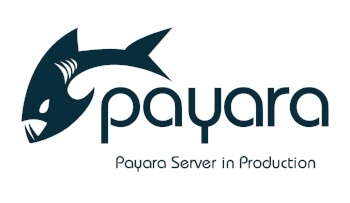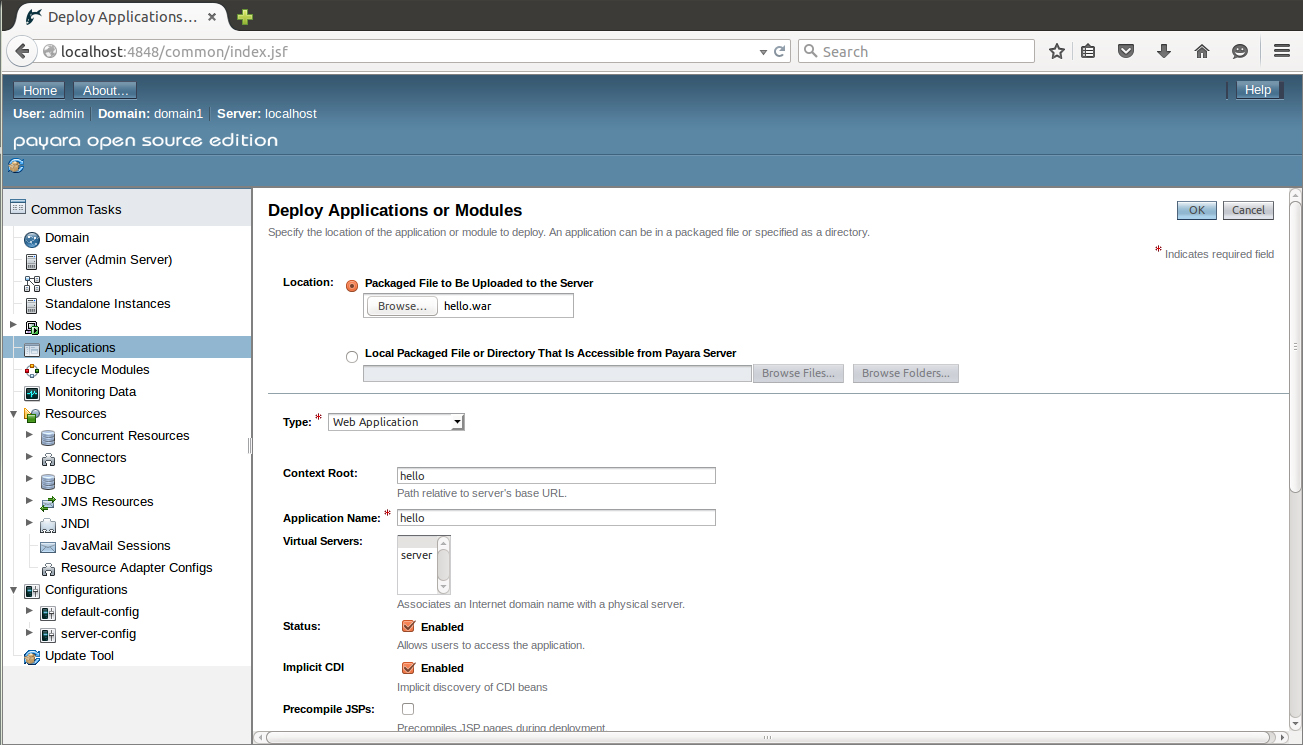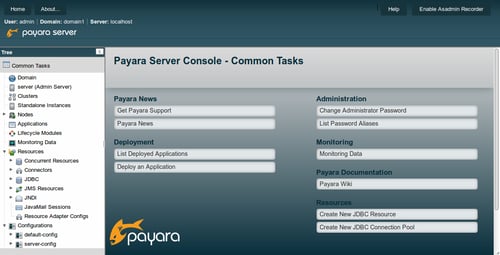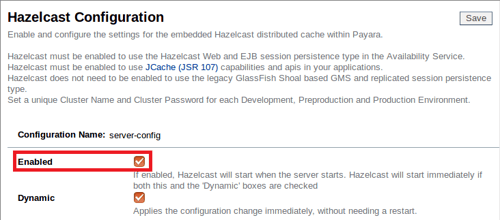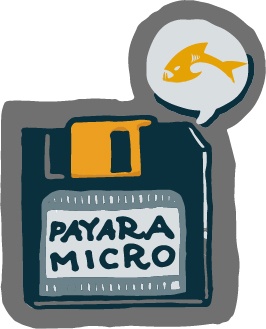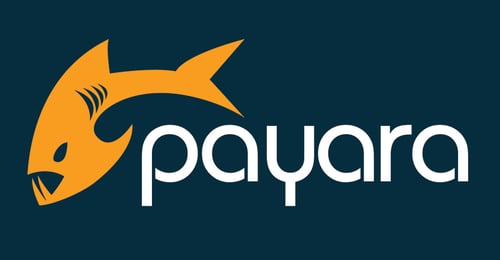Posts tagged How-to (2)
Fine Tuning Payara Server in Production (Japanese)
Published on 12 Jul 2018
by Fabio Turizo
Topics:
Production Features,
Docker,
How-to,
JVM,
Japanese language
|
0 Comments
Back to Basics – アプリケーションをPayara Server / GlassFish 4.1にデプロイする方法
Published on 29 Jun 2018
by Ahmed Qureshi
Topics:
Payara Server Basics,
How-to,
GlassFish,
GlassFish basics,
Japanese language
|
0 Comments
Back to Basics - Payara ServerをUbuntuにインストールする
Published on 27 Jun 2018
by Ahmed Qureshi
Topics:
Payara Server Basics,
How-to,
GlassFish,
GlassFish basics,
Japanese language
|
0 Comments
Fundamentos de Payara Server Parte 6 - Creando un cluster dinámico con conmutación por fallas en Payara Server con Hazelcast
Published on 29 May 2018
by Michael Ranaldo
Topics:
Hazelcast,
Payara Server Basics,
Clustering,
How-to,
GlassFish basics,
JVM,
Apache,
Payara Server Basics - Series,
Developer,
Spanish language
|
1 Comment
Avanzando más nuestra serie de blogs de introducción, esta entrada mostrará como puedes escalar de forma dinámica tu cluster, y como Payara Server maneja la conmutación por fallas entre miembros del cluster.
See here for the original version in English language.
La conmutación por fallas es la habilidad de continuar proporcionando acceso a nuestro sitio web o aplicación en el caso de que un servidor falle. Es una parte importante de un servicio que goza de alta disponibilidad, cuyo objetivo es minimizar los tiempos de inactividad a lo largo de tu infraestructura de servicios.
Getting Started with Payara Micro 5 - Demo
Published on 17 May 2018
by Andrew Pielage
Topics:
Payara Micro,
Microservices,
Demo,
Payara Server Basics,
How-to
|
0 Comments
Getting Started with Payara Server
Published on 10 May 2018
by Andrew Pielage
Topics:
Payara Server Basics,
How-to,
Payara Platform 5
|
3 Comments
Payara Tools Unlocks Eclipse For Payara 5
Published on 05 Apr 2018
by Arjan Tijms
Topics:
How-to,
Eclipse,
Payara Server 5,
Payara Platform 5
|
9 Comments
For a long time Payara, a derivative of GlassFish, could be used in Eclipse using the Oracle GlassFish Tools. With the release of Payara 5, a few problems prevented the plug-in from recognizing Payara 5, meaning Payara 5 couldn’t really be used in Eclipse. A new set of tools again makes it possible to use Payara 5 with Eclipse, along with other improvements.
New Relic and DataDog notifiers for Payara Server
Published on 14 Mar 2018
by Fabio Turizo
Topics:
How-to,
Cloud-native,
Notifier
|
0 Comments
As part of release 4.1.2.173, new notifier integrations were developed for Payara Server for the New Relic and DataDog application performance monitoring (APM) services. Both services allow the gathering of JVM statistics, HTTP metrics and support the use of notification for critical events in the server lifecycle management. In this era of cloud services, performance monitoring is an integral part of the IT infrastructure for any organization, which is the reason integration with these services has been brought to Payara Server. This article will show how to correctly set up these notifiers to that purpose.
Using PostgreSQL with Payara Server
Published on 18 Jan 2018
by Jonathan Coustick
Topics:
Payara Server Basics,
Connection Pools,
How-to
|
7 Comments
PostgreSQL is a fully SQL-Compliant relational database you can use with Payara Server and with no commercial licensing requirements it is well suited for production environments. This blog will show you how to set up a new PostgreSQL installation on Ubuntu and connect to it from Payara Server.
How to Run Payara Micro on Android (No Root Required)
Published on 04 Jan 2018
by Jorge Cajas
Topics:
Payara Micro,
Microservices,
How-to
|
0 Comments
Have you ever wondered how Micro is Payara Micro?
At first, this was a fun experiment installing a terminal app on my Android phone and playing around with some Linux commands. One thing lead to another and I ended up running a Payara Micro instance on my device! In this article, I'm going to show you exactly how to do that.
